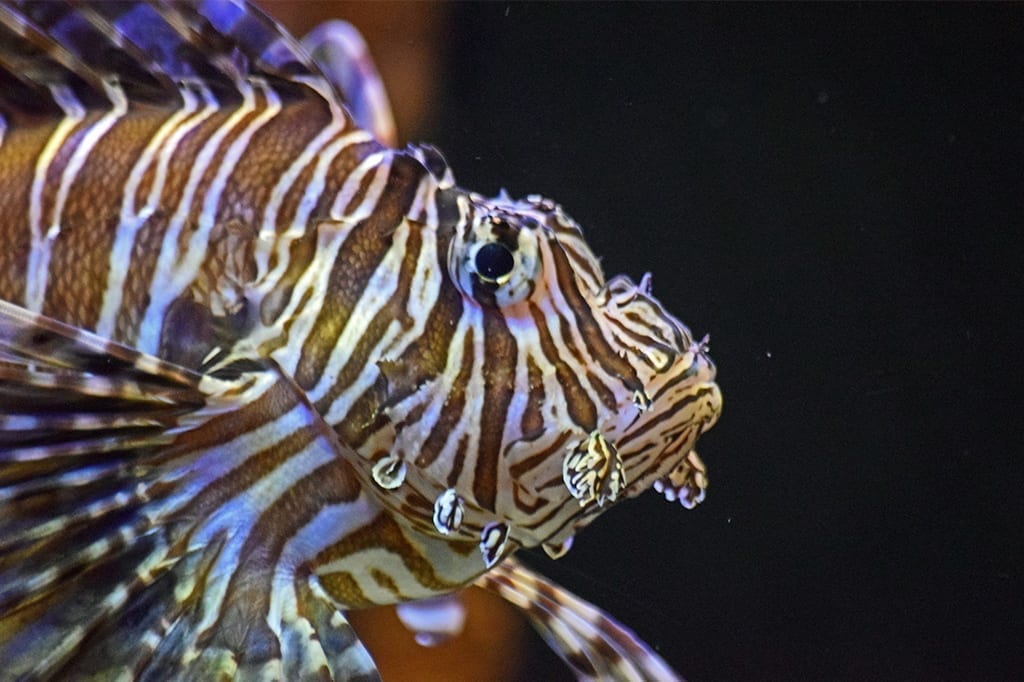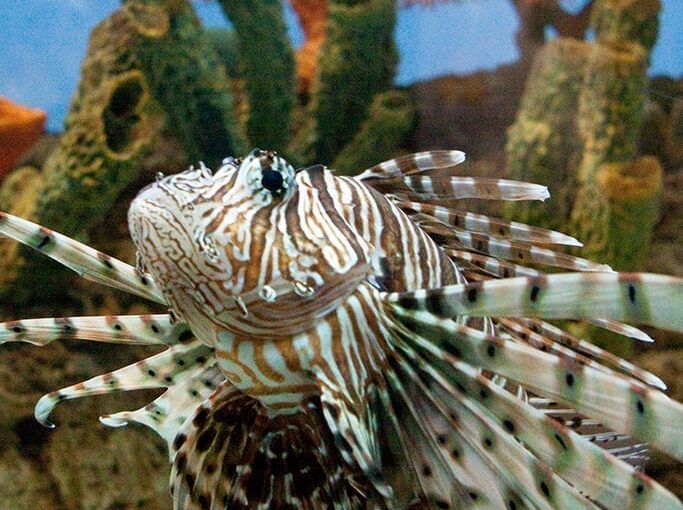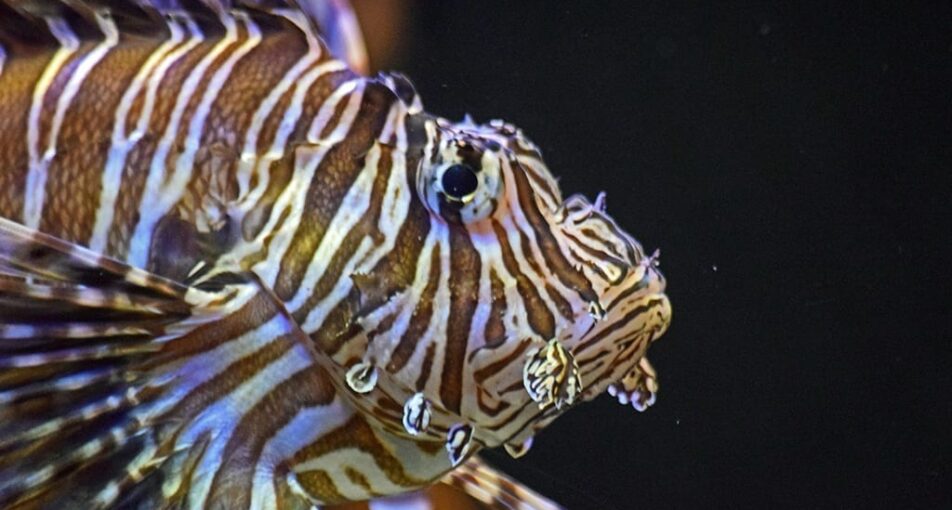The lionfish is immediately identifiable by its brightly striped body and its long, fanlike pectoral fins. The distinctive appearance is a warning to potential predators that the lionfish’s grooved spines are equipped with venom which can cripple a predator and even kill a human. The venom of the lionfish is a defensive adaptation and is not used to catch prey.
Classification
| CLASS: | Osteichthyes |
| ORDER: | Scorpaeniformes |
| FAMILY: | Scorpaenidae |
| GENUS: | Pterois |
| SPECIES: | volitans |
Habitat & Range
This species of fish is found in the shallow waters around coral reefs, caves or rocky areas.
Lionfish inhabit warm regions from the Red Sea across the Indian Ocean to Australia and the Pacific.
Location


Adaptations
- Nocturnal Ambush
- Lionfish are nocturnal predators, actively feeding at night. These ambush feeders lay motionless on the bottom or underneath large overhangs of coral until prey ventures near. Then they dart forward and snap up the prey with a quick strike. Lionfish will eat any animal smaller than the size of their mouth.
- Warning – Stay Away!
- The lionfish is immediately identifiable by its brightly striped body and its long, fanlike pectoral fins. The distinctive appearance is a warning to potential predators that the lionfish’s grooved spines are equipped with venom which can cripple a predator and even kill a human. The venom of the lionfish is a defensive adaptation and is not used to catch prey.
Physical Description
- Lionfish are 11.8-15 inches (30-38 cm) long.
- They weigh about two and a half pounds (1.2 kg).
- These fish are cryptically colored with complex patterns of red, black, brown and white spots, lines and swirls.
- Their fanlike dorsal, pectoral and anal fins are stout and sharp.
- Their grooved spines are equipped with venom used for defense.
- They have heavy bodies that are laterally compressed.
Diet
What Does It Eat?
In the wild:
Fish, crabs, shrimp and occasionally plankton.
At the zoo:
Shrimp.
What Eats It?
Larger fish prey on the lionfish.

Social Organization
Lionfish are solitary except during breeding.
Life Cycle
Male lionfish will mate with several females. After the fish spawn, they rise to the top of the water column and release gelatinous balls of eggs each containing about 2,000 fertilized eggs. The egg balls dissolve after about 24 hours, releasing the individual eggs which hatch in about 36 hours. Even though thousands of eggs hatch, very few young fry will survive to maturity. The young fry immediately begin feeding on the available plankton or newly hatched brine shrimp. The young are almost transparent. They develop the beautiful colors and patterns of the adult lionfish as they mature. Their lifespan in the wild is unknown but they live approximately ten years in captivity.














